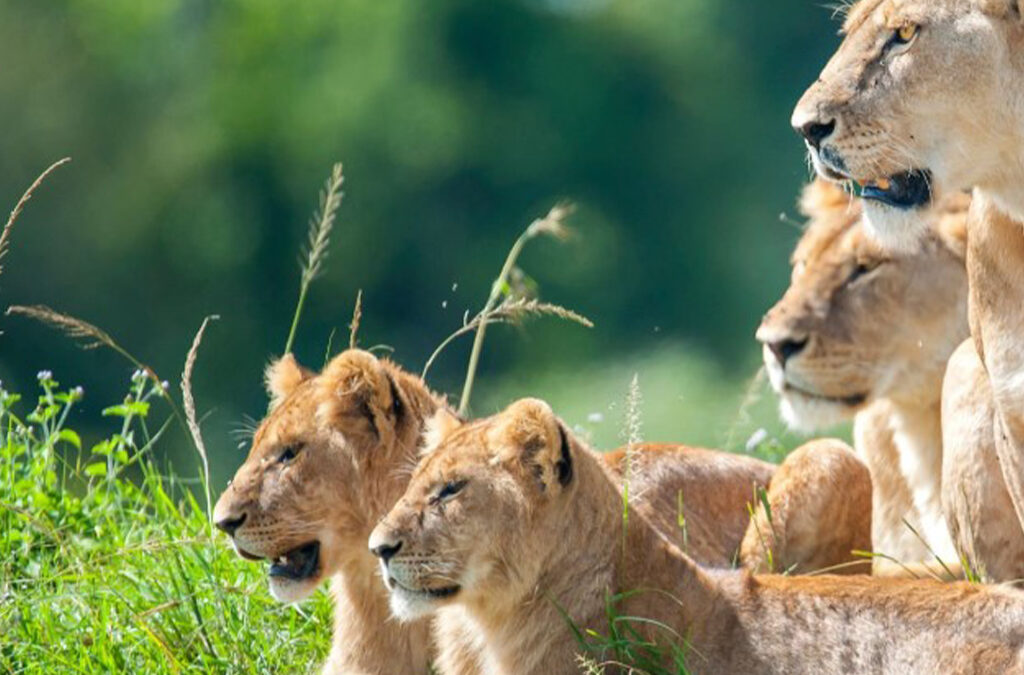Where to See Lions in Tanzania: An Unforgettable Safari Experience
Few experiences rival the thrill of watching a lion emerge from the tall grass at sunrise, golden light casting a regal glow on its mane. Tanzania, with its vast wilderness and abundant wildlife, offers one of the best opportunities in the world to witness these majestic creatures in their natural habitat. Exploring this East African nation is not just about checking off the Big Five is about stepping into the very rhythm of nature, where lions roam freely across sunlit savannas and ancient craters.
Below are the top places in Tanzania where lions are not just seen they are experienced.
1. Serengeti National Park The Kingdom of Lions
Serengeti isn’t just a name it’s a legacy. Sprawling over 14,750 square kilometers, this iconic park offers a front-row seat to the world’s greatest wildlife spectacle: the Great Migration. But even beyond the zebra and wildebeest herds thundering across the plains, lions dominate the landscape.
In the heart of the Serengeti, lions are often spotted lounging on kopjes (rocky outcrops), surveying their domain. Their presence feels natural, as if they have always belonged to the land, and the land to them. There is a distinct hum of tension and awe when they rise, stretch, and begin the slow, purposeful stalk of prey. Mornings are particularly special, with pride members greeting each other through low grumbles and affectionate nudges before a day of hunting or rest.
2. Ngorongoro Crater A Natural Lion Amphitheater
Descending into the Ngorongoro Crater is like entering a lost world. This collapsed volcanic caldera is a self-contained ecosystem teeming with wildlife, and lions rule it with a quiet, undeniable dominance.
The crater floor spans just over 260 square kilometers, yet supports a dense concentration of animals including some of the most visible lion prides in East Africa. Their behavior here is especially fascinating due to the relatively enclosed nature of the crater. Observing them interact with nearby elephants, buffalo, or hyenas offers rare insights into lion dynamics and survival strategies.
This is also one of the best places to witness lionesses teaching cubs to hunt nature’s classroom in real time.
3. Ruaha National Park Remote, Raw, and Lion-Rich
Ruaha offers a different kind of safari. Remote and less trafficked, it feels wild and untouched exactly the sort of place lions thrive unnoticed by crowds. As the largest national park in Tanzania, Ruaha is a haven for those seeking both solitude and close encounters with Africa’s top predator.
Here, lion sightings feel more intimate. Without the convoy of vehicles common in more popular parks, the silence deepens the drama. Often, lions are spotted resting in the shade of baobab trees or camouflaged in tall grasses, watching impala or kudu with unblinking focus.
Ruaha is also known for having one of the highest lion populations in East Africa. The interactions between prides and the rawness of their hunting tactics are a testament to survival in its most primal form.
4. Tarangire National Park A Hidden Lion Territory
While Tarangire is more famous for its elephants and baobab-dotted landscape, it’s also home to a healthy and growing lion population. What sets this park apart is its unique seasonal variation during the dry months (June to October), animals converge around the Tarangire River, bringing predator and prey into close quarters.
Lion sightings here often occur during late afternoon game drives, when they begin to stir from the shade, their golden coats blending with the fading light. The experience is deeply atmospheric: birds calling in the background, the buzz of cicadas in the air, and the sudden stillness that signals a lions approach.
5. Selous (Now Nyerere National Park) Wild and Unscripted
Selous, now known as Nyerere National Park, covers a vast wilderness south of Tanzania and is part of Africa’s largest protected area. Its less manicured than the northern circuit parks, offering raw, unfiltered safari experiences.
Boat safaris along the Rufiji River add an entirely different perspective. Watching lions from the water’s edge as they drink or rest under a tree is both surreal and humbling. The park’s wild character means lion sightings can be unpredictable but when they happen, they are deeply rewarding.
Tips for Seeing Lions in Tanzania
-
Early mornings and late afternoons are the best times to spot active lions, especially during the cooler parts of the day.
-
Visit during the dry season (June to October), when water is scarce and animals are easier to locate.
-
Be patient and observant. Lions often blend into the environment and may be closer than they appear.
-
Use a knowledgeable guide. Local guides not only know where lions are likely to be, but they also understand subtle behaviors that reveal when something extraordinary might happen.
More Than Just a Sight
Seeing a lion in Tanzania isn’t just about snapping a photo it’s about connection. Each encounter stirs something ancient and instinctive. Whether its the echo of a distant roar at night, the powerful presence of a male lion crossing the road, or the tender play between cubs, the experience stays long after leaving the savanna.
Tanzania offers not just locations to see lions, but the chance to step into their world where the wild is still wild, and awe still reigns.
Would you like recommendations on which lodges or camps offer the best lion-viewing experiences in each of these parks?






